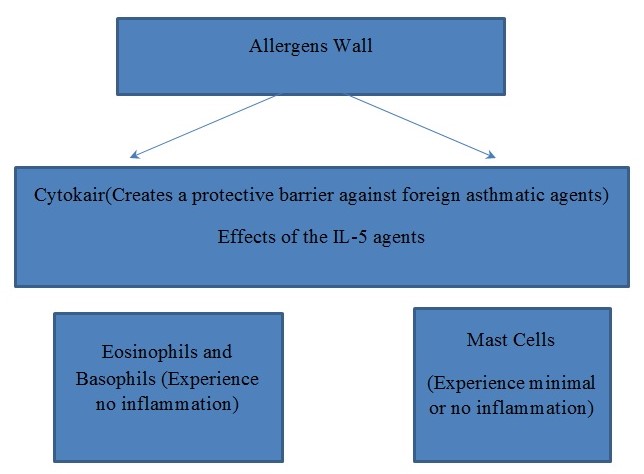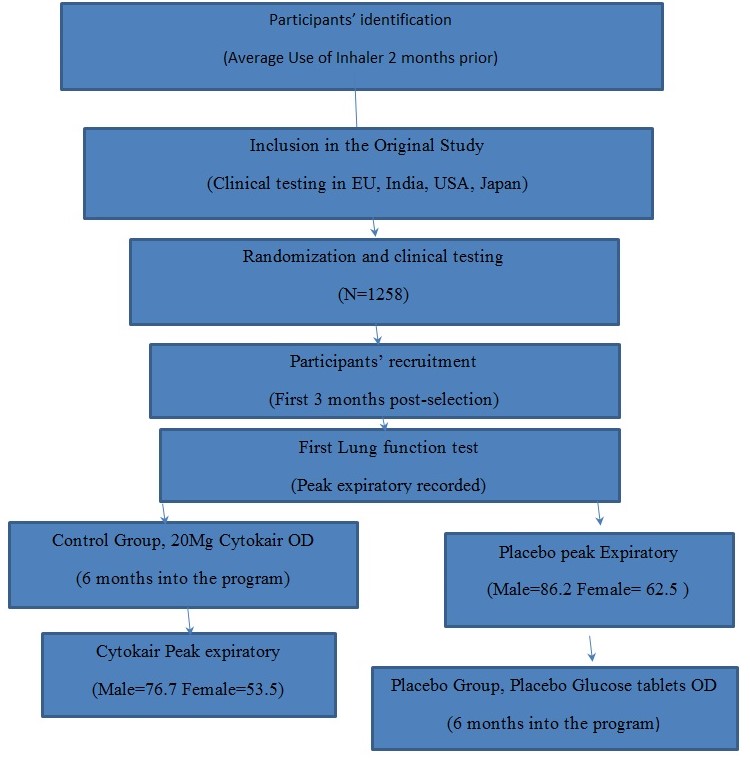Medication regimens in drugs are perceived to be life-givers and the silver bullets in healthcare, the foundations on which medicine and pharmaceutical advancements are based, and how patients’ wellness is viewed. Before they enter into the markets, drug manufacturers have to undergo a rigorous safety check process for the validation of the specific drugs. For these quality measures to pass the test, consumer protection institutions such as the Food and Drugs Administration (FDA) and other such organizations come in to safeguard the interests of consumers. Bronchial-related diseases such as asthma have been around for the longest time, and many medical substances have been approved for the treatment of the conditions. As note (Solé, Aranda and Wandalsen, p.2), globally, asthmatic conditions affect about three hundred million people, out of which close to fifteen percent experience asthma’s severe effects. However, the disease has proven to be well adapted to the already available asthma drugs because most of the available drugs do not give the desired results. In this regard, Cytokair could come in to correct the existing challenges.
Before the commercial approval of new drugs, the FDA framework for approvals considers some factors. As note by Darrow, Avorn, and Kesselheim (167), some of the FDA considerations include the analysis of the target disease, the identification of perceived risks and benefits as reported from clinical trial data, the potential risk aversion and risk management strategies. Therefore, new drugs are needed for the market to be able to control the symptoms and possible adverse outcomes currently being experienced from the use of other already existing drugs. Cytokair, a CU pharmaceutical new drug, is up for approval, as is contained in the document.
Pathophysiological Mechanisms of Asthma
Asthmatic phenotypes continue to challenge efforts towards having an ideal drug for the treatment of the condition, warranting the need for better drugs. A review on the pathophysiology of asthma remission suggests that the pathophysiology of asthma assumes some bronchial-related underpinnings. This is major because the human alimentary canal remains open to various internal and external reactors, some of which can reduce the size of the airway through swellings. Carpaij et al., 2019, p.8 note that such changes within the airway system, in turn, affect the airflow through the nasal cavity.
The human airway is naturally a host to mucus, the slimy substance that lubricates the nasal passageways and, which containing numerous immune cells, including white blood cells, T-cells, and basophil cells which are responsible for keeping the nasal way homeostasis (Terl et al., 2017, pp. 1279). In an asthmatic state, this balance is affected by a rapid increase in the number of eosinophils, must cells, and T-cells, thereby resulting in the airway’s inflammation that in turn reduces airflow (Terl et al., 2017, pp. 1279).
This obstruction is made possible by the nasal muscle constrictions, the airway’s inflammation due to massive goblet cell depositions, actions that are entirely reversible with the suitable medicinal agents (Bleecker et al., 2020, pp. 276). Therefore, any such drug aimed at working for the correction of asthma should reduce the obstructions resulting from airway inflammation. However, it is worth noting that asthma can affect the entire breathing system from the trachea, the bronchi, and, to the bronchioles, sometimes remaining unnoticed in the asymptomatic stage.
As is highlighted, asthma management involves both short-term and long-term therapies and medications, including ultra-long-acting agonist and the modulators of interleukin forms even though other drugs such as corticosteroids, CXC chemokine receptors, two agonists, toll-like receptor nine agonists and tyrosine kinase inhibitors (Terl et al., 2017, pp. 1280). The drug Cytokair’s mode of action aims to be an agonist to the Interleukin 5 (IL-5) receptors engineered towards critical cells in the pathophysiology of asthma, that is, the eosinophils and the basophils, by the activation of the IL-5 receptors IL-5, which acts on limiting the effects of asthma. In this regard, the proposed Cytokair drug is validated for entry into the asthma management market.


In figure 2 above, the study protocol is outlined. The study involved an inclusive and a broadened approach to data collection, a process conducted over 18 months’ timeframe from participants’ identification to their inclusion in the study. The next stage was the randomization and clinical trials for actual participants’ selection, after which the first lung function test was conducted on the selected subjects. Both the control and the placebo groups were administered at 20mg of Cytokair once daily, while the control group received a placebo glucose tablet once daily for six months. After this stage, the treatment outcomes were reviewed six months after the study to analyze the post-expiratory peak flow, which was then recorded to determine the efficacy of the drug.
However, this protocol seems to have omitted some of the information critical for the appraisal. The study did not allow for attrition as some participants opted out of the process, leaving an unexpected gap. Since the study does not indicate how this challenge was managed, it could then prove to be a stumbling block and has the potentials of invalidating the data. It is not clear given the study’s time disparity if the control group adhered to study protocols and avoided other asthma medications.
Questions
Cytokair question: Why is the compound’s bioavailability at 36% instead of better since it is coming into a competitive space with veteran drugs that have higher bioavailability and effectiveness?
Clinical studies that can be used: The study would use In vivo bioavailability studies of the Cytokair drug, given that the drug may have a different scope in its bioequivalence. What clinical studies can be used to validate the study?
The above-stated questions will help in streamlining the company’s expectations as it seeks to adopt CU pharma for in-licensing. The concerns are supportive and well-intended to foster the strength of Cytokair in addressing Asthmatic patients’ needs.
Assessment of Cytokair and Data
After the analysis and assessment, Cytokair is a drug with the potential to achieve record-breaking results if given a chance, with a few adjustments as deemed necessary. Therefore, with all confidence, the drug should be given an opportunity and be adopted for in-licensing. As a new drug candidate, Cytokair is as competitive as the rest of the new entrants. It primarily focuses on limiting the inflammatory effects that result in asthma by targeting the eosinophils and basophils and the IL-5 receptors. However, identifying the drug’s potential side effects and the appropriate dosages for different population groups would be of great interest for better outcomes, thus fostering for more research.
There is a need for more clinical trials on the use and validity of the Cytokair drug as either a quick-acting drug or a chronic term medication to manage asthma. For approval, the drug has to be qualified for use amongst various population groups, including children, adolescents, adults, and the elderly, given that asthma affects the mentioned groups almost equally. Therefore, many research studies remain critical even in support and for the embrace of the drug. The research should be focused on the entire population, with a wide scope of the study to help in determining indications for cases, such as whether its use is recommended in pregnancy or if the drug can be used with other bronchodilators concurrently.
The baseline data and the pre-clinical trials conducted for the drug’s approval are solidly founded and scientifically sound. This, therefore, allows the company to avoid starting the process of validating the use of the drug from zero. Building on the already existing information when fostered with a broader net of pre-clinical trials will be advantageous if the drug is adopted for in-licensing. Adapting the already existing study for build-up will be cost-effective for the company, allowing it to be more successful in increased profit margins. In a fair trade, both partners ought to have other possible chances or options of consideration to allowing comparison to achieve maximum profit or outcomes from a deal while critically reducing chances of loss.
The trading ground is fair even though CU Pharma may be at a disadvantage following the serial disapprovals reported. However, if the drug sails through for approval, the pharmaceutical organization presenting for in-licensing stands a chance of benefiting greatly from the perceived profits, which would be a dream if the other available options are considered if a decision were to be made over this assessment, it would be successful if it made use of the disgraced process and right the faults committed by CU Pharma to make Cytokair the best asthma remedy of all time.
In summary, the authorizing bodies’ Cytokairs dual rejection had valid concerns, especially those seeking supportive research data. The drug’s efficacy as per the studies conducted, however long the study time was, cannot be questioned further. The compound enjoys legitimacy based on its chemical solid formulation and engineering to reduce or eliminate specific asthma accelerating agents. The current study supporting Cytokair’s use lacks adequate information that can make the drug sail through the approval tests. It should be buffered with more updated and accurate scientific research data for undertaking more real-time research over various population groups. Despite all the stated concerns, I approve of CU Pharma in-licensing. This is a decision I have arrived at after analyzing the risks and benefits involved in the adoption and the possible positive effects the drug could have in addressing asthma problems among children, adolescents, adults, and even the elderly population.
Reference List
Bleecker, E.R. et al. (2020) ‘Systematic literature review of systemic corticosteroid use for asthma management’, American Journal of Respiratory and Critical Care Medicine, 201(3), pp. 276-293.
Carpaij, O. A. et al. (2019) ‘A review on the pathophysiology of asthma remission’, Pharmacology & Therapeutics, 201, pp. 8-24.
Darrow, J.J., Avorn, J. and Kesselheim, A.S. (2020) ‘FDA approval and regulation of pharmaceuticals, 1983-2018’, JAMA, 323(2), pp. 164-176.
Solé, D., Aranda, C.S. and Wandalsen, G.F. (2017) ‘Asthma: epidemiology of disease control in Latin America–short review’, Asthma Research and Practice, 3(1), pp. 1-6.
Terl, M., et al. (2017) ‘Asthma management: a new phenotype‐based approach using presence of eosinophilia and allergy’, Allergy, 72(9), pp. 1279-1287.
